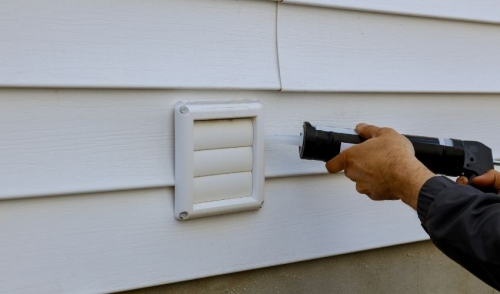
Go Green With Air Sealing
Homeowners are still looking to save on energy and sealing up air leaks is one way to help.
When it comes to green and energy-efficient homes, homeowners will be looking to you for ways to help them save money and be kind to the environment. They’re likely to want you to update and upgrade items they can see: appliances, lightbulbs, doors, and windows. It’s your job to let them know there are other techniques and products that will be hidden from their sight but that are just as effective in creating an energy-efficient home. One such example is air sealing.
Why Does Air Sealing Matter?
Though the holes through which air leaks are often small, those little amounts of lost air add up. According to the Energy Star website, when taken together, all the holes and gaps in the building’s envelope equate to having a window open each day in a year. It also estimates that 20% to 30% of air transferred through the home via ducts is lost because of poorly connected ducts, leaks, and holes. The homeowner’s conditioned air, along with the money that goes into heating or cooling it, flies away. In addition to lowering heating and cooling costs, sealing holes keeps out dirt-, dust-, and pollen-filled air that can seep into the home. And while stopping up air leaks in a home is important on its own, remodelers also have to be sure the home is well ventilated and that filtered, fresh air is distributed throughout the house.
How Can You Tell If Your Client’s Home Leaks?
First, talk to your clients about their home. Are there any spaces that feel especially drafty? Have they noticed a moisture build-up inside specific places? The Department of Energy (DOE) recommends visually inspecting the home for obvious leaks. A blower-door test is also a great way to detect air leaks. Depending on your state, performing this test might be required for your work to pass inspection and meet energy code requirements.
How Can It Be Fixed?
According to the DOE, weatherstripping and caulking are two ways to eliminate these gaps. These techniques are not just for exterior and obvious air leaks, such as from windows and doors. Other places to look for air leaks, according to the DOE, are around plumbing and electrical fixtures. For taking care of those more difficult areas, new caulks and tape are coming onto the market all the time. Here are three examples.
Rain Resistance Within One Hour
DAP’s new Dynaflex Ultra Advanced Exterior Sealant uses Weather Max technology to provide UV protection and dirt and water resistance. The sealant has a lifetime mold-, mildew-, and algae-resistance guarantee, is paint- and rain-ready one hour after application, and resists fading, bubbling, yellowing, or cracking, according to the company. It’s available in white, clear, beige, clay, iron gray, and dark bronze. dap.com
What’s in a Name?
Dow’s Great Stuff Pro is a flexible foam sealant designed to withstand the scraping and rubbing of drywall installation. It is a water-based, low-VOC sealant that is flexible when cured. It can be applied to the face of framing lumber around all rough openings and around the top plate and bottom plate. It cures in 2 to 24 hours, depending on humidity. dowbuildingsolutions.com
Easy Peasy
DuPont’s FlexWrap EZ is an adhesive tape that can be used around wires, plumbing pipes, HVAC components, and more. It is composed of 100% butyl adhesive and can withstand up to 270 days of UV exposure, according to DuPont. The rolls are 2 ¾ inches wide and 15 feet long. DuPont says one roll will cover an average size house. dupont.com
